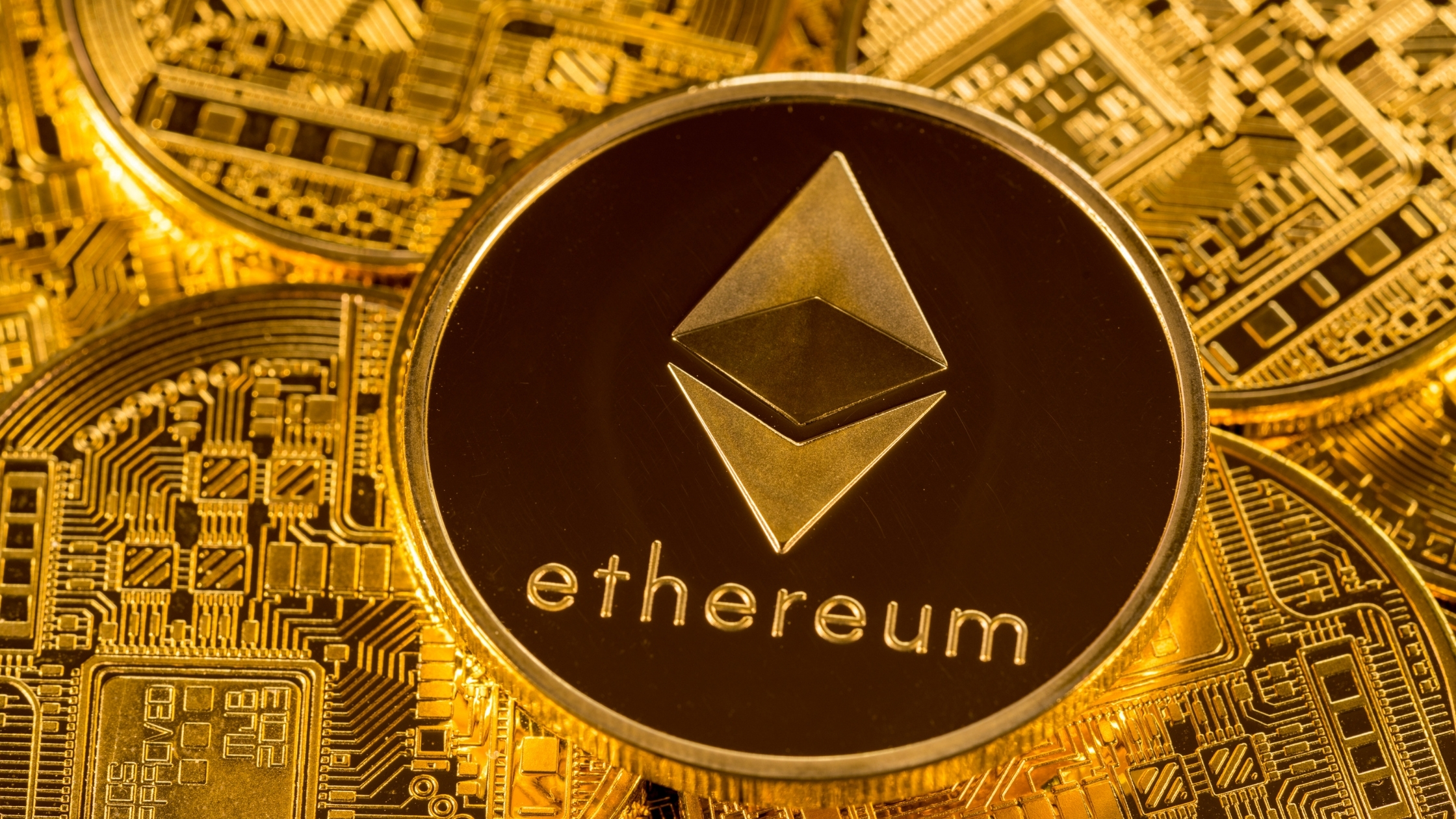Question: What is a digital currency actually backed with as there are no assets within a digital currency?Answer: Cryptoassets are—to quote a recent Bank for International Settlements’ (BIS’) consultative document on the topic—“private digital assets that depend primarily on cryptography and distributed ledger or similar technology.” So the world’s central bankers agree they are assets. Let’s use some real world examples. Your social capital is an example of an intangible asset that you own: your relationships. Twitter and Instagram let you grow and monetize that social capital into tangible assets (cash) with a bit more ease and scale. But still, even converting 1% of your readers on Twitter into paid customers counts as success, and it’s tricky to price your product dynamically. That’s a lot of waste! With a smart-contract based solution built on Solidity1, you could set the terms of your own content distribution with more precision and take a larger piece of the pie than you might get via existing intermediaries—as long as you are willing to use Ethereum as your medium of exchange. Thus users can win twice: a new path-to-market opens up, plus they enjoy the price appreciation as the unit of account on the platform becomes more widely accepted. This happens even though the disruption is deflationary to existing financial and web 2.0 platforms! In financial services, we believe DeFi platforms are winning this business to the tune of a nearly $3B annual revenue run-rate.2 Music, social media, peer-to-peer lodging and search will attempt this model as well. Decentralized options may not predominate in any given industry, but they will play a role. Consumer welfare may increase from the lower costs and higher autonomy: that’s a tough-to-measure asset, but real. Just as the software that runs the Google search engine is an intangible asset, with returns accruing to Google shareholders (high profits) and consumer welfare (which is basically a free product), so, too, Ethereum’s network produces returns to stakeholders in the form of transactions fees and new currency issuance. It is true, however, that this ecosystem requires more trust in computer code and an appreciation for a higher level of monetary velocity (and leverage) than in the fiat system. Also, more sophisticated governance schemes for allocating value to stakeholders are emerging in smart contract form. Q: Why would monetary and regulatory authorities allow Bitcoin and Ethereum to even exist?A: The Bank of England wrote in a recent stablecoin primer: “New forms of digital money could potentially offer benefits in terms of cost and functionality. And there could be potential gains from a shift to more market-based financing. It is also possible that they could enhance the transmission of monetary policy.” Digital assets create new economic growth via the efficiency gains inherent in digital money (most obviously, automation). Some policymakers are likely to embrace this reality, as happened in El Salvador. Those that don’t initially may face increasing pressure to do so as the benefits of wider financial inclusion, digitalization and de-materialization become more evident. Global competition for capital may ensure that cryptocurrencies survive. Q: Why is Ethereum better than other layer 1 solutions? Are there high switching costs or anything keeping DeFi projects or other things with Ethereum, or can they easily switch to others?A: This is a key question for our $2T bull case. The performance of FAANGM stocks over the past decade demonstrated the relevance of scale in software platforms. Ethereum currently boasts the largest developer community and widest variety of applications, including multiple central banks, among layer 1 protocols. To the extent the scale advantage keeps costs lower than the competition, switching would be unattractive. Q: Can you define Etherum revenues? Would you say Ethereum bears a kind of intrinsic value (whereas Bitcoin potentially not), due to its huge ecosystem?A: Ethereum revenues comprise the rewards paid to miners in the form of new token issuance plus gas fees3, paid in return for validating transactions on the Ethereum blockchain. By observing the market-cap-to-miner-revenue ratio, we can observe that the market places a high valuation premium on Bitcoin’s scarcity, whereas Ethereum price-to-revenues is more similar to Web 2.0 firms despite its topline growing much more quickly. Q: Can you touch on the environmental impacts of blockchain?A: The risk vs. reward of any energy use comes down to tradeoffs. What costs are generated vs. benefits received? For many, digital assets are a deflationary innovation that bring consumer welfare by disrupting existing infrastructure (digital wallet vs. ATM machine: which needs more raw materials?). Others object that even 1 kilowatt of power is too much to spend on Bitcoin. In gauging the tradeoffs vs. benefits, we should remember that the vast majority of carbon-based energy created never touches the electrical grid. The high cost of converting and transporting it ensures that much is actually wasted in the form of cow flatulence or flared gas. To the extent that a poor equatorial nation with no electrical grid to speak of could mine Bitcoin competitively from solar or other renewable energy and sell it to buy textbooks and air conditioners, what ESG manager would object? As for Ethereum, its energy usage is already 93% lower than Bitcoin’s on a per-transaction basis and headed much lower with its transition to proof-of-stake.4 |
| Resources:1 Solidity is an object-oriented programming language for writing smart contracts. It is used for implementing smart contracts on various blockchain platforms, most notably, Ethereum.2 Source: The Block.3 Gas fees are payments made by users to pay for the computing energy needed to process and validate transactions on the Ethereum blockchain.4 Source: Digiconomist.
For an extended version of this Q&A as well as disclosures, please visit: https://www.vaneck.com/us/en/blogs/digital-assets/matthew-sigel-qa-the-bull-and-bear-case-for-ethereum. About the Author: Matthew Sigel is head of Digital Assets Research at VanEck. He joined VanEck in 2021. Prior to VanEck, Sigel worked at CLSA, where he spent 10 years in sales & research roles, most recently as Portfolio Strategist and author of the widely-read HELLO INVESTORS investment newsletter. Before CLSA, Sigel was an Analyst and Portfolio Manager on the AllianceBernstein US & Global Thematic equity funds, where he covered technology and other sectors. Prior experience includes journalist at Bloomberg, CNBC and NHK Japan Broadcasting, where he covered finance. Mr. Sigel is a CFA Charterholder and has a BA from Harvard University. Matthew Sigel is head of Digital Assets Research at VanEck. He joined VanEck in 2021. Prior to VanEck, Sigel worked at CLSA, where he spent 10 years in sales & research roles, most recently as Portfolio Strategist and author of the widely-read HELLO INVESTORS investment newsletter. Before CLSA, Sigel was an Analyst and Portfolio Manager on the AllianceBernstein US & Global Thematic equity funds, where he covered technology and other sectors. Prior experience includes journalist at Bloomberg, CNBC and NHK Japan Broadcasting, where he covered finance. Mr. Sigel is a CFA Charterholder and has a BA from Harvard University.
VanEck is an Associate Member of TEXPERS. The views and opinions contained herein are those of the author, and do not necessarily represent the views of VanEck nor TEXPERS. These views are subject to change. This information is intended to be for information purposes only and it is not intended as promotional material in any respect. Follow TEXPERS on Facebook, Twitter and LinkedIn as well as visit our website for the latest news about Texas' public pension industry. |


